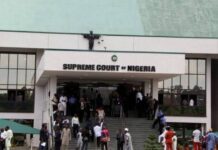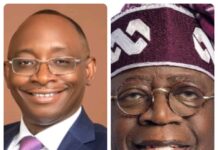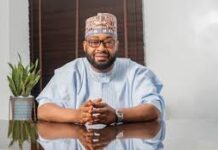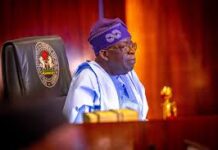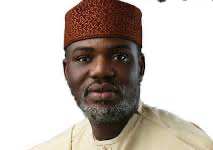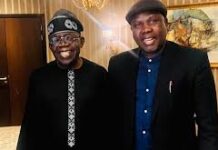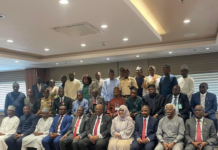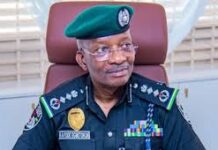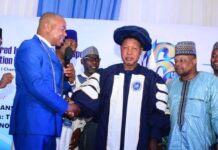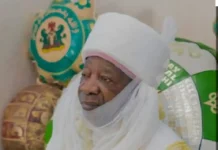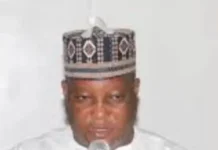2023: Northern And Southern States Demand New Polling Units
By Wale Akinola
Politics Digest – Ahead of the 2023 general elections, 12 northern states are demanding for 3,323 additional Polling Units (PUs) as the Independent National Electoral Commission (INEC) begins the process of creating new PUs in an attempt to expand Nigerians access to elections.
From the southern part of the country, 14 states also want new 2, 424 PUs under the exercise.
The requests total 5, 747 and that was as of October 2020.
Curiously, Kano, Kaduna, Katsina, Sokoto, Jigawa and Zamfara states, all from the North-West where voter populations are huge, are missing on the list of the requests for new PUs.
Also missing is Ekiti State on the South-West list, Gombe and Yobe on the North-East list while Enugu and Ebonyi are not on the South-East list.
The breakdown of the requests on geopolitical basis, according to the State of Voter Access to Polling Units in Nigeria Discussion Paper prepared by INEC and obtained by Sunday Vanguard last week, shows that North-Central’s (seven states) demand is 1, 732 (30.1%), North-East (four states), 1,321 (23%), North-West (one state), 270 (4.7%), South-West (five states), 1, 073 (18.7%), South-South (six states), 1, 114 (19.4%) and South-East (three states), 237 (4.1%).
The current 119, 973 PUs, created by the defunct National Electoral Commission of Nigeria (NECON) in 1999 (22 years ago), INEC believes, have become inadequate by the reason of the emergence of new settlements across the country, difficult terrain and increase in the number of registered voters.
For instance, whereas there were about 58million registered voters for the 1999 elections, there were around 84million for the 2019 polls.
And whereas the average voters per PU in 1999 were 482.9, the average voters per PU for the 2019 elections were 700.1.
Analysts said the figures could further rise for the 2023 elections as INEC embarks on Continuous Voters Registration to capture those who just attained the voting age of 18.
Justifying the case for new PUs across Nigeria for the 2023 polls, INEC Chairman, Mahmood Yakubu, in his preface to the Discussion Paper on the State of Voter Access to Polling Units in Nigeria, argued, “Over the years, voter access to Polling Units in Nigeria has been declining. For the 2019 general elections, the average number of voters per Polling Unit was about 700 nationally, rising to over 2,000 in the Federal Capital Territory while a specific Polling Unit in Nasarawa State had over 15,000 voters.
“Furthermore, some Polling Units are located in very difficult places that do not encourage voters to participate in elections, particularly persons living with disability. Others are located in places experiencing conflicts or in places under the control of partisan actors.
“Moreover, because of inadequate Polling Units, many voters have to travel long distances to their Polling Units on Election Day.
“All these have contributed to low voter turnout at elections, egregious violation of election regulations and guidelines, violence and insecurity.
“Crowding at Polling Units also constitutes health and safety issues in this period of the global COVID-19 pandemic”.
Meanwhile, INEC has not disclosed the number of PUs it envisages will be sufficient to add to the current 119, 973 PUs to improve voters’ access on Election Day.
“The requests cut across the country. This clearly indicates that the dwindling voter access to Polling Units is a national problem, rather than a sectional”, INEC noted in the Discussion Paper.
“By implication, the establishment of more Polling Units will be beneficial to voters all over the country, contrary to the conspiracy theories that some parts would be favoured or disfavoured.
“Secondly, in the 5, 747 received from the 25 states and the FCT, population growth, difficult terrain and new settlements were the main reasons given for the requests.
“These point to the fact that perhaps the most important cause of declining access to Polling Units is the non-availability of Polling Units which leads to overcrowding in the few available ones”.
30,027 Polling Units
This is not the first time INEC is embarking on an exercise to expand voter access at PUs.
It narrated in the Discussion Paper: “In 2014, in the build-up to the 2015 general elections, the Commission proposed the ‘creation and distribution’ of ‘additional 30,027 new Polling Units’.
“This was with the objective of decongesting overcrowded Polling Units and dispersing voters as evenly as possible to prevent disruptions, delays and violence on Election Day.
“Furthermore, the exercise was aimed at a spatial distribution of voters, the relocation of Polling Units from unsuitable places to more suitable places and the location of Polling Units within reasonable commuting distances of voters.
“But the effort was jettisoned as a result of unfounded allegations by various political interest groups and the negative propaganda from some sections of the media.
Read Also:
“For instance, the Commission was accused of engaging in a ‘disproportional distribution of Polling Units in Nigeria aimed at fostering the dominance of one section of the country over the others for political advantage.’
“Eventually, the Commission reverted to the use of Voting Points for the 2015 general elections”.
Breakdown according to states
The INEC Discussion Paper shows that Borno tops the table of states demanding for new PUs.
It currently has 3, 932 and is asking for additional 1, 235 units.
This is followed by Niger which currently has 3, 185 PUs but is asking for 1, 042 more.
Kebbi has 2, 398 but is requesting for additional 270.
Lagos has 8, 462 but is asking for 29 more.
Abia which is asking for 79 PUs already has 2, 675, Adamawa has 2, 609, wants 14 extra; Anambra has 4, 608, wants 56 extra; Akwa Ibom has 2, 980, wants 15 more; Bauchi has 4, 074, wants 2 more; Bayelsa has 1, 804, wants 51 more; Benue has 3, 688, wants 108 more; Cross River has 2, 283, wants 356 more; Delta has 3, 624, wants 138 more; Edo has 2, 627, wants 4 more; Imo has 3, 523, wants 102 more; Kogi has 2, 548, wants 180 more; Kwara has 1, 872, wants 151 more; Nasarawa has 1, 495, wants 63 more; Ogun has 3, 213, wants 239 more; Ondo has 3, 009, wants 101 more; Osun has 3, 010, wants 358 more; Oyo has 4, 783, wants 346 more; Plateau has 2, 631, wants 114 more; Rivers has 4, 442, wants 550 more; Taraba has 1, 912, wants 70 more while FCT has 562, wants 74 more.
Find below excerpts from the INEC Discussion Paper No. 1/2021.
Polling Units located in politicians’ homes
The Electoral Act 2010 (as amended) defines a Polling Unit (PU) as “the place, enclosure, booth, shade or house at which voting takes place under this Act” (Section 156-interpretation). Consequently, Polling Units (PUs) constitute the basic structure of Nigeria’s electoral system and democracy.
They are the nerve centres at which voters make contact with the Commission during elections. As such, it is exceedingly important that Polling Units are not only ready and conducive to receive voters, but that they are also well-organized and secure for the beehive of activities that occur in them on Election Day. Indeed, well-organized and efficiently run Polling Units are emblematic of the quality of the entire election ecosystem. Voter access to Polling Units is therefore fundamental to our elections and democracy at large.
Over the years, several challenges have confronted INEC with Polling Units. First, there is the problem of inadequate number of Polling Units available to voters. As a result of population growth, demographic shifts and establishment of new settlements and residential areas, existing Polling Units have become inadequate. Since the law ties registration of voters and voting to specific Polling Units, it means that voters have to walk long distances on Election Day to vote. Often, they are not able to do so because of restrictions on movement.
Second, inadequacy of Polling Units implies that many of them are overcrowded during elections, which is a recipe for delays, disruptions, violence and apathy. To be sure, overcrowding varies from one area to another due to uneven growth in population. Still, practically all Polling Units have experienced increased population of voters.
Thus, during the 2011 elections, most of the Polling Units saw turnouts exceeding the 500 voters designated per Polling Unit. In fact, a review carried out by the commission in 2014 revealed that many Polling Units recorded very large number of voters. Some had exceeded the designated figure of 500 voters per Polling Unit by a couple of thousands while some had over 4,000 registered voters. These huge numbers pointed to the urgency of reorganizing Polling Units.
Third, the location of some of the Polling Units makes access very difficult. For instance, some are located in very physically inaccessible locations, particularly for persons living with disability. And, at least until recently, some were even located in the homes of important people and religious groups, who often have political leanings capable of discouraging some voters from voting. Also, some Polling Units are located in highly charged and contested areas, including areas experiencing communal conflicts.
Fourth, there is the problem of organization of Polling Units. This is related to location. Many of them are in the open, with little cover. Others have inadequate space to cater for the official schema for organizing Polling Units. As a result, arrangement of Polling Units during elections to facilitate voting is difficult to achieve. For example, this has been conducive to vote-buying whereby voters are able to reveal their choices to “party agents” to enable them to consummate the buying and selling of votes.
This particular problem has become even more serious in the context of the COVID-19 pandemic because the constricted spaces available at Polling Units do not support the necessary social distancing recommended by health authorities.
Finally, even the actual number and exact locations of Polling Units were unknown for a long time. The Jega Commission (2010 – 2015) had to embark on a verification exercise to enumerate and locate the Polling Units. In fact, it was only after this verification that the number of Polling Units was established as 119,973, instead of the round figure of 120,000 that was assumed for many years.
To be continued
Source: Vanguard






